


“Design is only design if it communicates knowledge” – Enzo Mari
A chair can be anything. Whether a toy or an object of love, it brings people together. It is an extension of the human body connecting skin and feeling, activities and rituality. What if a chair became a small space for children to share their playtime and one for parent-child snuggle time? Well, guess what: design has the power to do that by creating connections between humans and making every moment of the day memorable.
Every person we meet exists to unite souls and energy, and a chair ideally brings together people of all classes and corners of the world. It can create memories and enjoyable moments while connecting humans and building multicultural bridges between countries.
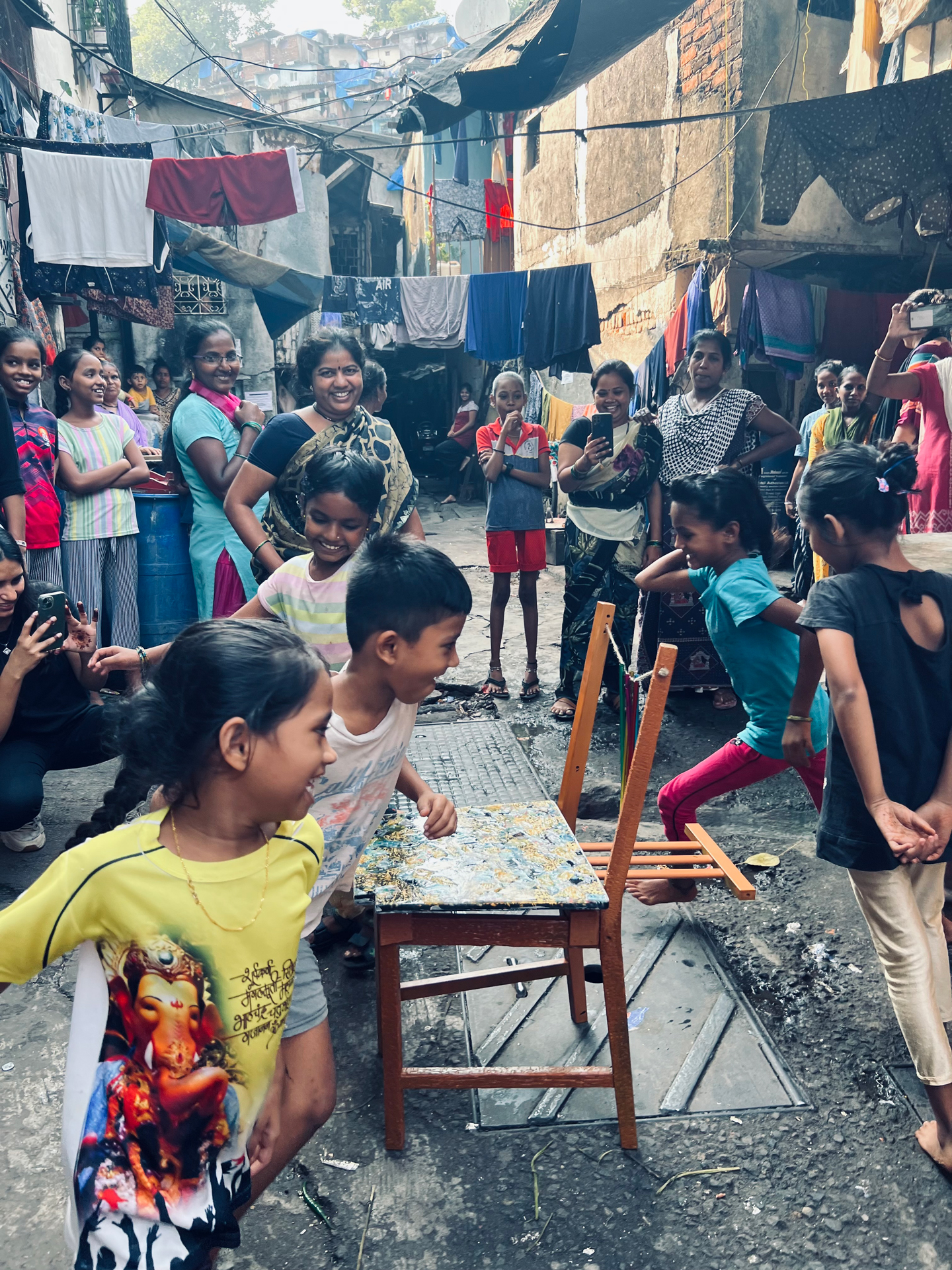
Istituto Marangoni Dubai Product Design student Devanshi Talreja's Anjaana chair. All the images are from Talreja's photo shoot in Mumbai’s slums
A project I developed while studying Product Design at Istituto Marangoni Dubai, the Anjaana chair is inspired by Indian craftsmanship and stems from the restyling of an existing piece focused on sensory and sustainable processes. Wondering about the name, I went with a Hindi word meaning “unknown” to emphasise the way this object belongs to everyone, and everyone can find a piece of themselves. Furthermore, I was inspired by life in Mumbai’s slums, where life flows, and things never stop, feeling the energy of that place evolving here in design, form, colour and function.
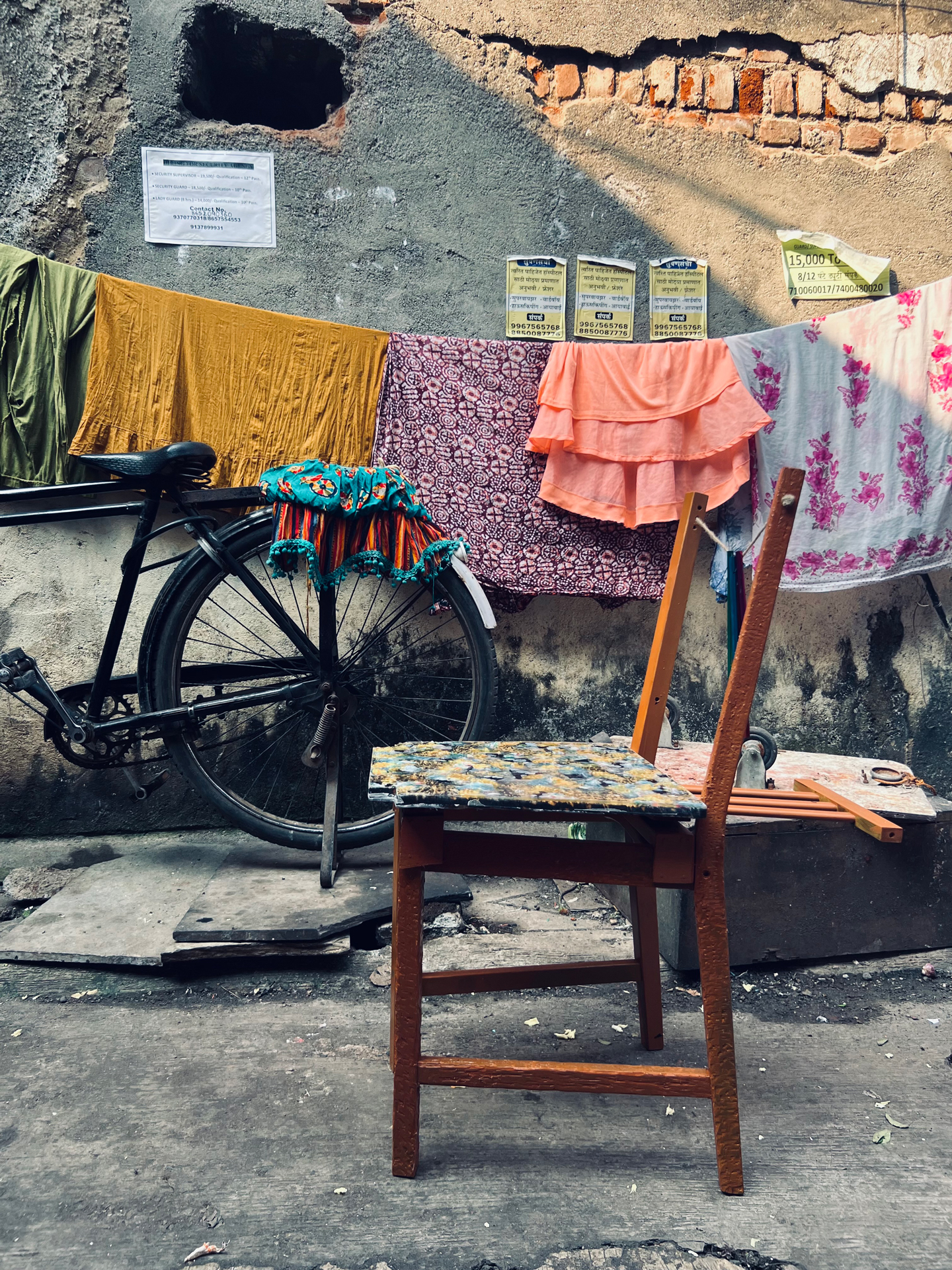
IM Product Design student Devanshi Talreja's Anjaana chair is inspired by Indian craftsmanship
Since it all started with the restyling of an old chair, this design piece focuses on human circularity through a series of acts of sharing, leasing, reusing, repairing, refurbishing and recycling existing materials and products. When designing a product, considering its lifespan is crucial due to population growth and the limited availability of raw materials on the market. Therefore, a designer’s challenge is to use the existing as building blocks for their new products. Moreover, as society pays great attention to recycling resources and reducing waste, we must also avoid the “waste” of human know-how. Each person should work in a position that fully enhances their skills and abilities. These thoughts led me to my Anjaana chair. In this sustainable creation, design and Indian craftsmanship play a role in representing a multicultural phenomenon while creating a sense of joy and community.
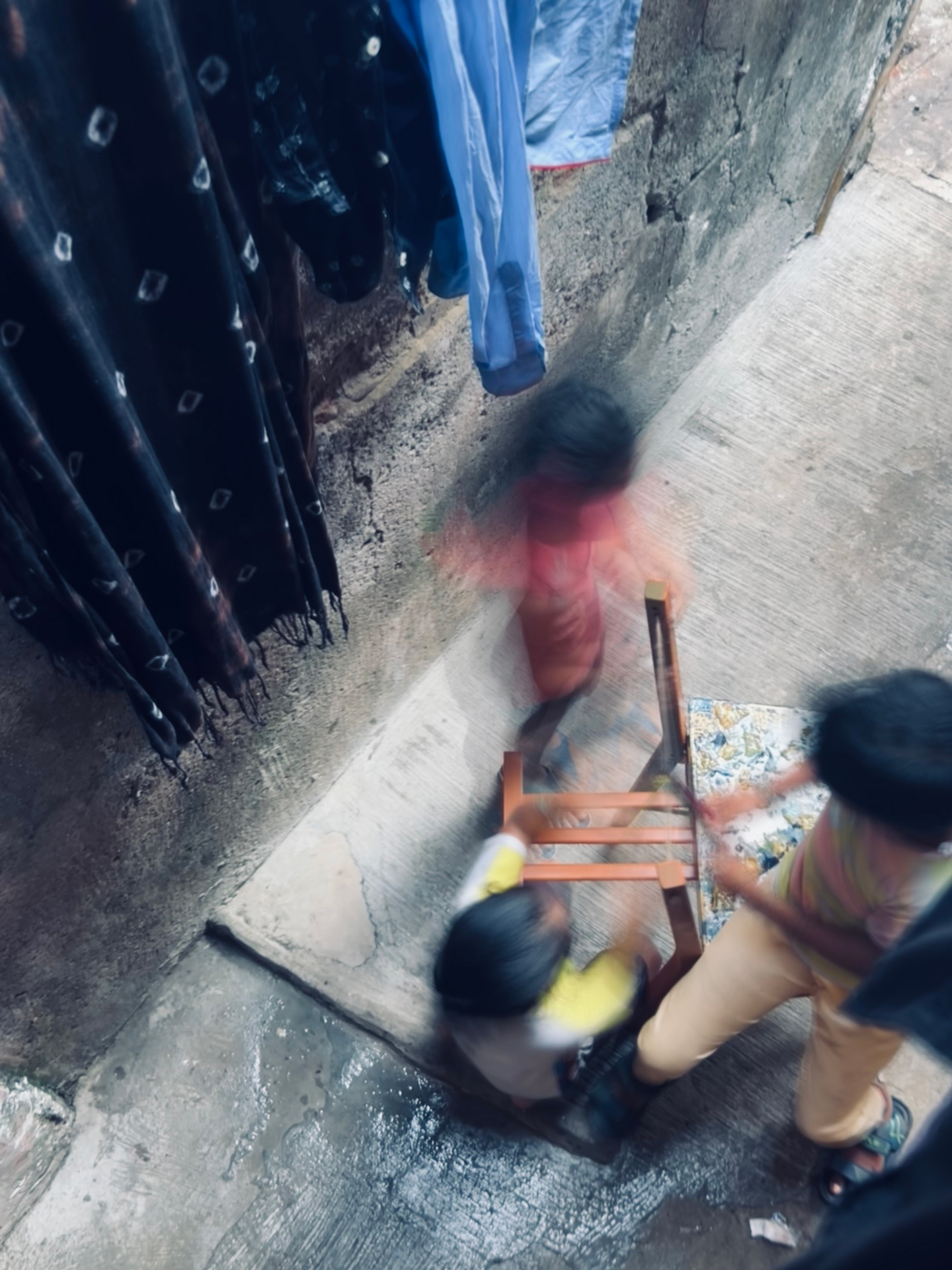
What if a chair became a small space for children to share their playtime and one for parent-child snuggle time?
Of course, each creation requires a long process of arranging different materials and gathering various ideas. Crowning my Product Design studies at Istituto Marangoni Dubai, even this project was very challenging, as the restyling of an ordinary piece of furniture turned into the development of a chair that can be used in multiple ways. Besides being a traditional chair, it also serves as a coffee table, not to mention that people can sit on either side of it.
With a keen eye for Indian craftsmanship and heritage, the Anjaana chair was assembled using parts of an old chair, leftover raw fabric, resin and paint. After carving and scraping the wood of its structure to bring out the four legs’ roughness and give the whole a nice texture, parts of the back from the original chair were converted into a coffee table. Then, the entire structure was painted brown; since people associate this colour with the earth and the shade of cereal, a brown piece of furniture is often perceived as stable, dependable and wholesome. As a reference to the cultural meanings of colours in Indian culture, pieces of raw fabric were glued onto the Anjaana chair seat. This is not all about aesthetics, as vibrant shades are used in Indian festivals and celebrations and have political and religious meanings.
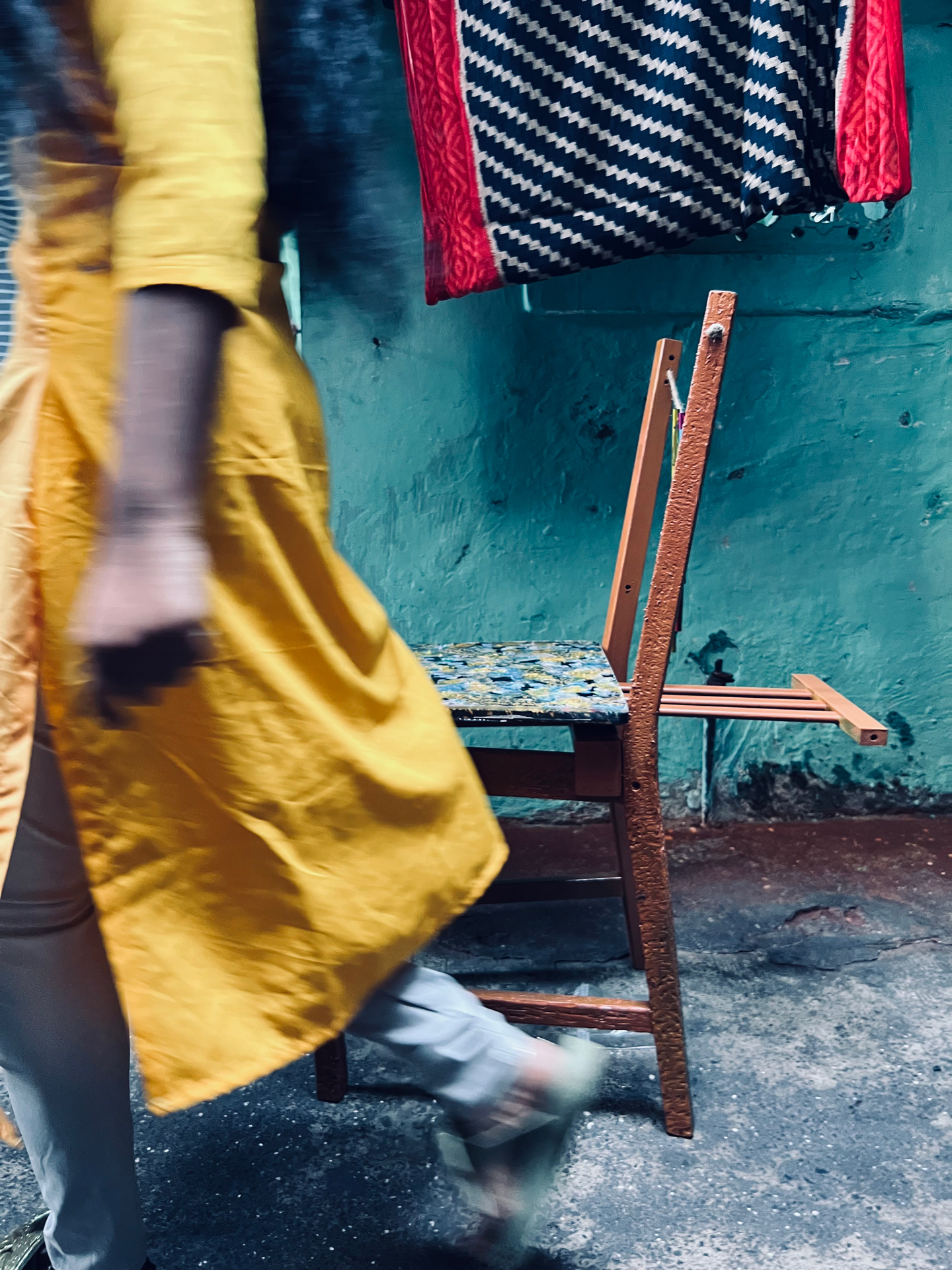
When assembling her Anjaana chair, Product Design student Devanshi Talreja used parts of an old chair, leftover raw fabric, resin and paint
When looking at the unique texture of the Anjaana chair’s seat and legs, you can feel the rawness of Mumbai’s slums. Since children there cannot afford to purchase new toys, this chair can also be used as a plaything by hanging metal rods, stones, ropes, etc. on its backrest: there are so many ways in which they can experience and play with the chair. Flexible enough to meet children’s needs, it can also be used by a parent to feed their kid sitting in the opposite direction, thanks to the absence of the conventional barrier of the backrest. Replaced by a rope carrying some toys, this unusual structure can encourage a connection between parents and their children, while these small swinging distractions can make the adult’s job easier.
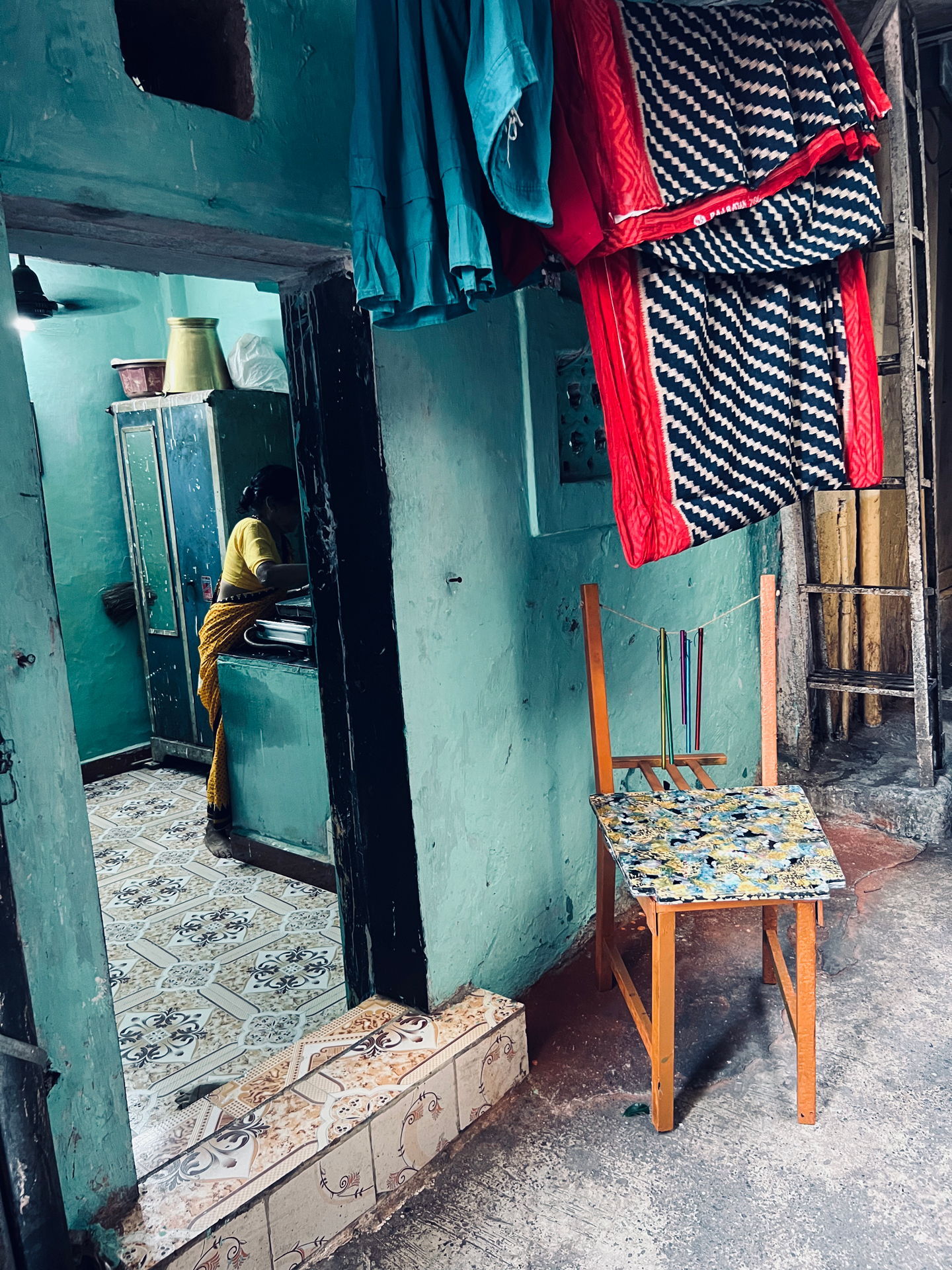
When looking at the unique texture of the Anjaana chair’s seat and legs, you can feel the rawness of Mumbai’s slums
“There’s a Swedish word, bruksföremål. It’s hard to describe in English, but it means everyday objects, items that are made to be used, that have a place in the world, and hopefully, are built to last forever. It’s a nice feeling when the things you design have that sense of purpose” – TAF Studio about their Atelier Chair for Stockholm’s Nationalmuseum.
Devanshi Talreja
Product Design student, Mumbai



